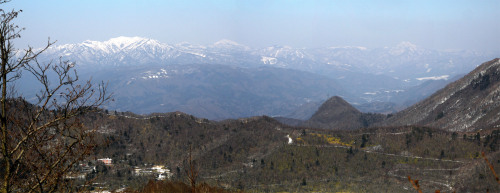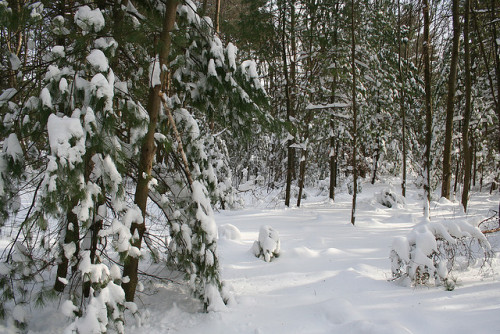#fujiwara

You gotta love Chika for being so unapologetically herself
赤城山・地蔵岳より尾瀬・藤原方面 左から武尊山・至仏山・燧ケ岳 武尊と至仏の間に笠ヶ岳(2,057m),燧の右奥かすかに会津駒ケ岳
Mountains of the deepest Kanto, where the big rivers begin to flow radiating through the Honshu island.
Post link
Fujiwara no Michinobu Ason
Série des Cent poèmes de cent poètes expliqués par la nourrice
Hokusai Katsushika (1760-1849)
1835
estampe nishike-e
Japon
© RMN-Grand Palais (musée Guimet, Paris) / Harry Bréjat
Section Japon du musée Guimet
Post link
1421 on Flickr.
Making my way through some of my favorite poems from Volume 2 of MYS, despite the fact that it’s perhaps not seasonally appropriate in this case:
明日香清御原宮御宇天皇代 [天渟 原瀛真人天皇謚曰天武天皇] / 天皇賜藤原夫人御歌一首
The age of the heavenly sovereign who reigned from the Kiyomihara Palace at Asuka (Ame no Nunahara Oki no Mahito no sumera mikoto; his posthumous name is Tenmu tennō)
One verse sent by the sovereign to his Fujiwara consort
吾里尓 大雪落有 大原乃 古尓之郷尓 落巻者後
我が里に大雪降れり大原の古りにし里に降らまくは後
wa ga sato ni/opoyuki pureri/opopara no/purinisi sato ni/puramaku pa noti
In my village, a great snow has fallen–but as for the fallen village at Ōhara, it has yet to fall.
藤原夫人奉和歌一首
One verse the Fujiwara consort offered in reply
吾岡之 於可美尓言而 令落 雪之摧之 彼所尓塵家武
我が岡のおかみに言ひて降らしめし雪のくだけしそこに散りけむ
wa ga woka no/okami ni ipite/purasimesi/yuki no kudakesi/soko ni tirikemu
On my hill, I told the Dragon God, and he made it fall - shattering the snow into many tiny pieces, he scattered them about here.
This seems like a very mundane exchange between the Tenmu and his consort, who in reality were only about a kilometer apart, the morning after a snow fall. And that is what it is - except it’s also so much more. That even such exchanges were conducted with the utmost decorum, creativity, and wit is what makes MYS poetry, and classical Japanese poetry in general, so wonderful. Tenmu’s verse is full of puns/associative word play: opoyuki/opopara, the “opo” in both cases meaning “great,” i.e. “great snow” and “great field.” We also have the repetition of “puru” meaning both “to fall” and “to become old/run down,” but in order to convey the pun in the case of “purinisi sato ni” I have translated it as “to the fallen village” - this in English maybe suggests a “downfall” and less of a gradual decay, which is the sense in Japanese, so I may have to rethink the best way to keep the pun relevant in translation… puns are what often make poems really interesting, and yet are probably the most difficult thing to convey well in translation (you pretty much always need a footnote). Tenmu has also loaded his verse up with “p” sounds in a way that just makes it delicious to enunciate, something I’m sure he was very aware of. In any case, Tenmu ends with what seems like it could be a question (he’s not where she is, so he doesn’t know, really, whether it has snowed or not, but he can probably guess that it has - which makes his ending statement almost necessarily a question “has it yet to fall?” because otherwise this makes no sense), but grammatically is not. “puramaku pa noti” is literally “its falling will be later” or something to that effect. In any case, the Fujiwara consort’s answer confirms that this is a rhetorical question of sorts, as she answers it, tongue-in-cheek, saying she brought about its falling where she is by offering prayers to the Dragon God, who was believed to control precipitation (snow and rain). Of course the snow had fallen – Ōhara is only one kilometer southeast of where the Kiyomihara palace site is thought to have been – but she cleverly attributes the snow having fallen there to her own prayers, and offers a powerful, almost frightening image of the deity “smashing” the snow and “scattering” it about. These sort of personified descriptions of the deity’s activity in a verse is something I’ve not seen elsewhere and what originally attracted me to this pair of verses. The consort’s verse in a way belongs to a sub-category of ritual verse that describes a prayer and then its content/after-effects (sometimes before they’ve happened in an anticipatory way to bring abut the desired after-effects, but this is not the case here), but she seems to be playing with the language of ritual to paint the reality of the snowfall in a more sacred, awe-inspiring light. We are not meant to believe she literally prayed to the dragon god of the hill for the snow. She simply casts it in this prayer-effect form in order to infuse the landscape with a supernatural power; in doing so, she conveys her cleverness, for she does not merely say “yes the snow has fallen and it is white” in an elevated style, as later poets might, but she re-imagines and re-shapes what she sees in a “grandiose” (taketakashi) way.
The other joy of these two poems which make them so much more than they appear on the surface is the layers of meaning provided by the man'yō gana transcription, with Tenmu’s poem using 落 for “puru” (which is common in MYS, I should say, but fits nicely with the sense of the verse) and 巻 “wrap up, roll up” for the future “mu” (mizenkei) + ku (nominalizer) in “puramaku,” which following immediately on 落for “furu” (to fall), suggests the piling up of snow, or even the enagement with it by packing it together as a snowball or the like. The consort’s verse is more clever, however, in its making use of 塵 (dust) for the verb “tiru,” which takes the “kudaku” (shatter, smash) to a whole new visual level, where the snowflakes are rendered almost imperceptibly small, the size of dust. This use of 塵 is a “gikun” - taking an established kun reading of a character and reapplying it in another context, where it is used for its phonetic and not its semantic value - but this stripping of meaning in the use of kun characters in this manner often involved the invoking of the nuance of the character’s semantic content, as it does in this case. Thus the transcription in MYS adds a whole new level of insight/interpretation, again emphasizing how texts had shifted from an oral to a written mode, where the visual perception of the verse was becoming an important (though still secondary to aural) means of apprehension.
I have paired this with one of my favorite photos of snow in my hometown - which was covered in more than 7 feet of snow this past winter and is only now emerging from underneath all that (I wasn’t there for that, so unfortunately don’t have a photo - even though that would probably indeed be the “greatest” of snowfalls… I doubt Tenmu meant quite that much with his 大). Living out in CA for the past several years, I do kind of miss the snow - there is a certain aesthetic value, for me at least, in the way it blankets the earth and covers over all of its imperfections, a great equalizer of sorts. Also, snow=water, and we could use some of that out here. I know people on the east coast and especially in MA probably never want to see a snowflake again, but believe me I think it’s a blessing, rather than a curse, to live somewhere the dragon god is willing to shatter the snow and spread it about. My prayers continually go unanswered in that regard.
Post link

Chika Fujiwara Dance


Pinterest study ✨(it’s a rose petal in her mouth btw)
Decided to put everyone’s favorite girl Fujiwara in there because I realized I haven’t drawn fanart for my favorite manga yet (seriously go read Kaguya-sama: Love is War, it’ll be worth your time)

![Fujiwara no Mokou: Touhou Project art [Artist: Fall dommmmmer] Fujiwara no Mokou: Touhou Project art [Artist: Fall dommmmmer]](https://64.media.tumblr.com/54cbc486fd18b1cf24c868da5fa804d2/d5986f58db7c1d3e-3f/s500x750/3fe6f7bcfc8d7fbf9c618c3c53c361158bdb446f.png)











